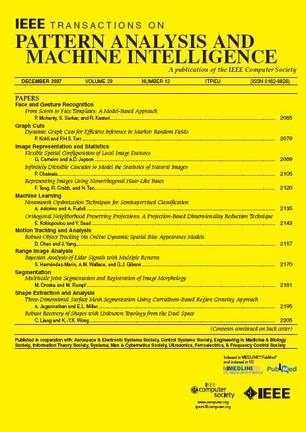解耦特征查询学习广义医学图像表示。
IF 18.6
1区 计算机科学
Q1 COMPUTER SCIENCE, ARTIFICIAL INTELLIGENCE
IEEE Transactions on Pattern Analysis and Machine Intelligence
Pub Date : 2025-08-11
DOI:10.1109/tpami.2025.3597364
引用次数: 0
摘要
医学图像通常来自多个临床中心,使用各种类型的扫描仪。当面对如此显著的跨域分布差异时,深度网络倾向于通过多个通道捕获相似的模式,同时也允许不同的跨域模式在同一通道中休息。这种信道冗余限制了表示的表达能力,导致泛化能力较差。为了解决这一基本但具有挑战性的问题,我们提出了一种新的解耦特征作为查询(DFQ)框架,用于领域广义医学图像表示学习。它的一般思想是利用通道解耦的深度特性作为查询。特别地,提出了一种约束等距的深度实例白化变换,使解耦后的每个信道与其余信道正交。此外,解耦的深层和浅层特征之间的长期依赖关系被隐式约束,以最小化整个训练过程中的信道冗余。大量的实验表明,该方法在四种模式下的三种医学领域泛化任务上具有最先进的性能。本文章由计算机程序翻译,如有差异,请以英文原文为准。
Learning Generalized Medical Image Representation by Decoupled Feature Queries.
Medical images are usually collected from multiple clinical centers with various types of scanners. When confronted with such significant cross-domain distribution discrepancy, a deep network tends to capture similar patterns by multiple channels, while different cross-domain patterns are also allowed to rest in the same channel. Such channel redundancy limits the expressive capability of a representation, resulting in less preferable generalization ability. To address this fundamental yet challenging issue, we propose a novel decoupled feature as query (DFQ) framework for domain generalized medical image representation learning. Its general idea is to leverage the channel-wise decoupled deep features as queries. Particularly, a deep instance whitening transform with restricted isometry is proposed, which enforces each channel orthogonal to the rest channels after decoupling. Besides, the long-range dependency between decoupled deep and shallow features is implicitly constrained to minimize channel redundancy throughout training. Extensive experiments show its state-of-the-art performance on three medical domain generalization tasks with four modalities.
求助全文
通过发布文献求助,成功后即可免费获取论文全文。
去求助
来源期刊
CiteScore
28.40
自引率
3.00%
发文量
885
审稿时长
8.5 months
期刊介绍:
The IEEE Transactions on Pattern Analysis and Machine Intelligence publishes articles on all traditional areas of computer vision and image understanding, all traditional areas of pattern analysis and recognition, and selected areas of machine intelligence, with a particular emphasis on machine learning for pattern analysis. Areas such as techniques for visual search, document and handwriting analysis, medical image analysis, video and image sequence analysis, content-based retrieval of image and video, face and gesture recognition and relevant specialized hardware and/or software architectures are also covered.

 求助内容:
求助内容: 应助结果提醒方式:
应助结果提醒方式:


